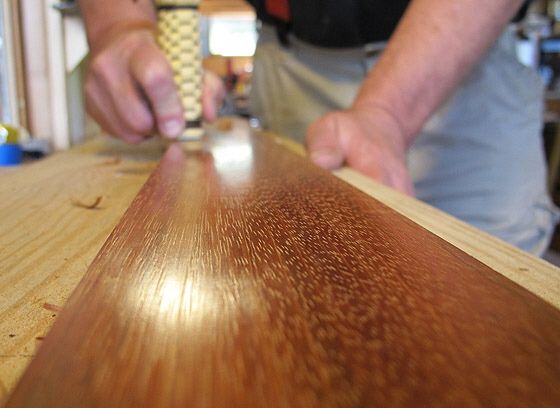
What started as a technique for preserving human remains is now being applied to revitalize wood. At the University of British Columbia Okanagan, researchers are utilizing plastination, a method that substitutes water in tissues with silicone, to enhance the durability and rot resistance of Western red cedar. These findings could revolutionize the utilization of natural materials in sustainable architectural design.
Developed several decades ago for preparing anatomical specimens for medical research, plastination has inspired the UBC team, led by Professor Abbas Milani and doctoral student Olivia Margoto, to adapt this concept for organic building products. Rather than merely coating surfaces or injecting chemicals, plastination operates internally, substituting moisture with silicone and safeguarding microscopic structures from decomposition.
To experiment with this concept, the team dehydrated cedar samples using acetone, introduced silicone into the wood under vacuum conditions, and subsequently cured the material to establish an internal waterproof barrier. The outcome was wood that appeared unchanged but performed quite differently. Water was unable to permeate its cells, and the treated samples remained lighter, stronger, and more flexible after immersion.
Safeguarding Nature from Within
Western red cedar is highly valued in North America for its aromatic scent and natural appeal, yet it tends to swell and split with moisture fluctuations. Conventional treatments depend on paints, sealants, or biocides, which inevitably degrade over time. Plastination presents a novel approach by fortifying wood at the cellular level, creating an unseen network that prevents water ingress while preserving strength.
“Western red cedar is cherished for its availability and renewability; however, its propensity to absorb moisture is a significant drawback. By employing plastination, we are safeguarding the wood’s structure from the inside out, enhancing its strength while greatly increasing its water resistance.”
Advanced imaging revealed that silicone penetrated approximately one-fifth of the cedar’s cross section. Experiments demonstrated nearly 60 percent reduced water absorption and a 45 percent boost in surface hydrophobicity. Perhaps surprisingly, the treated cedar maintained its tensile strength; instead, it became more uniform and slightly more pliable, which could lessen cracking and prolong structural durability in extreme climates.
In contrast to prior studies on bamboo, cedar displayed an even greater responsiveness. Its fine microchannels enabled silicone to closely bond with the cell walls, forming a more robust internal framework. For architects and builders in search of sustainable, non-toxic materials, this could result in wood that retains its warmth and character while performing like a contemporary composite.
From Laboratory Experiment to Construction Material
Environmental factors continue to be important. Acetone serves as an effective dehydrating agent but necessitates safe recycling, and while silicone is long-lasting, it lacks biodegradability. The researchers are currently investigating solvent recovery systems and plant-derived polymers to lessen the process’s environmental impact. Industrial partner NetZero Enterprises possesses patents for the method and is working with UBC to scale it for practical production.
“Plastination provides a formidable alternative to conventional wood preservatives, which frequently depend on harmful chemicals or short-term coatings. This technique may significantly prolong the lifespan of natural wood products, without compromising environmental integrity.”
As a concept, it carries a certain poetic resonance: a methodology originally intended for preservation of bodies is now being harnessed to conserve the form of a tree. Envision cedar siding that remains smooth through years of storms, or timber bridges that resist decay without a trace of poison. In Margoto’s words, nature has already supplied us with extraordinary materials; the challenge lies in ensuring their longevity. With plastination, the unassuming cedar plank could someday outlast the steel nails that fasten it.
The research is documented in Materials: 10.3390/ma18184353.
If our reporting has informed or inspired you, please consider making a donation. Every contribution, no matter the size, empowers us to continue delivering accurate, engaging, and trustworthy science and medical news. Independent journalism requires time, effort, and resources—your support ensures we can keep uncovering the stories that matter most to you.
Join us in making knowledge accessible and impactful. Thank you for standing with us!